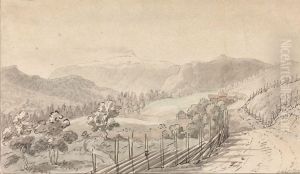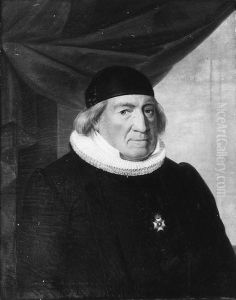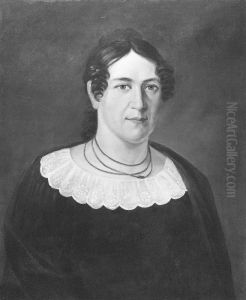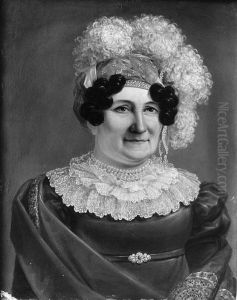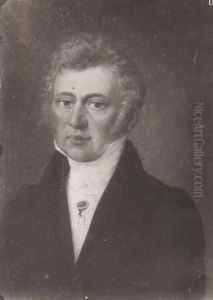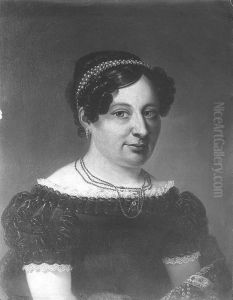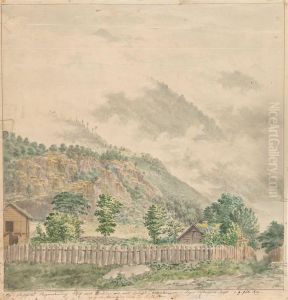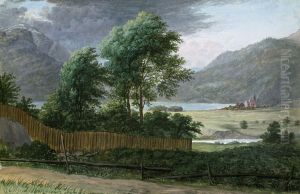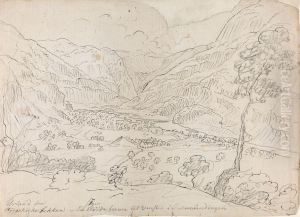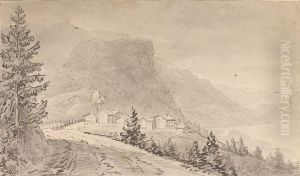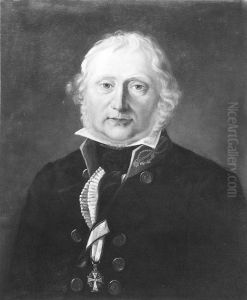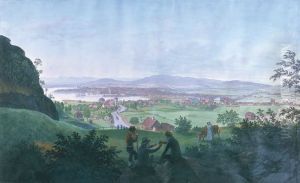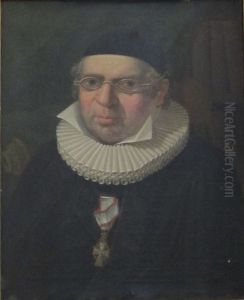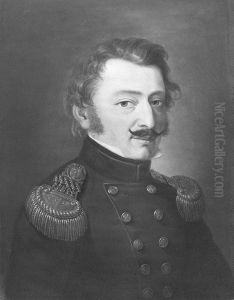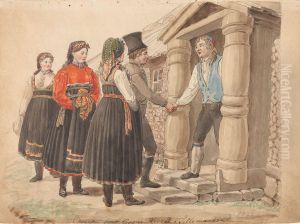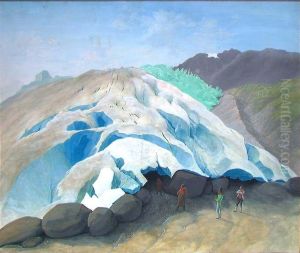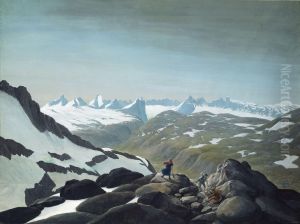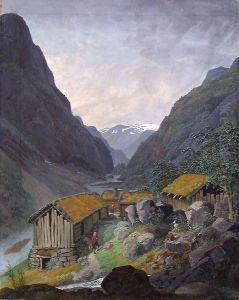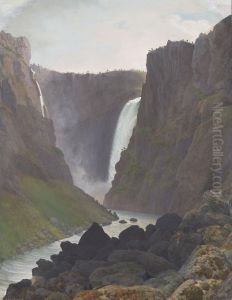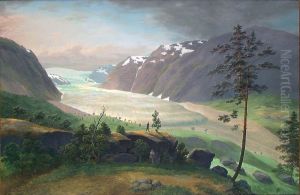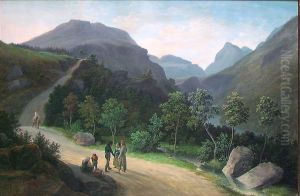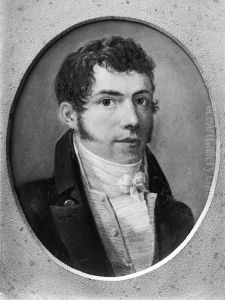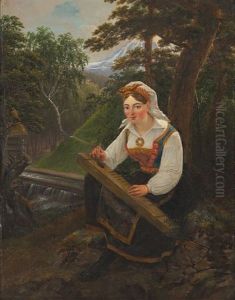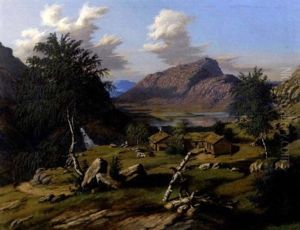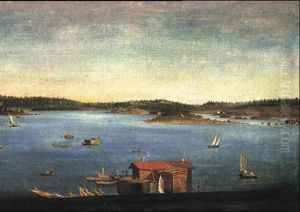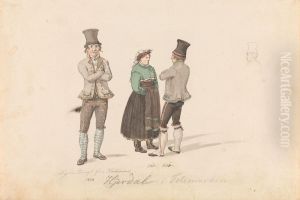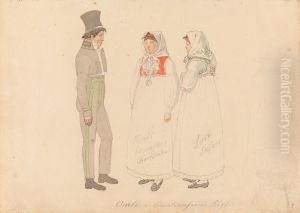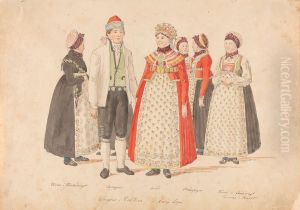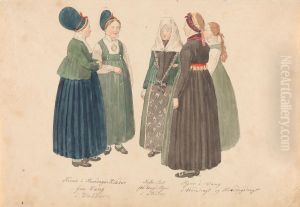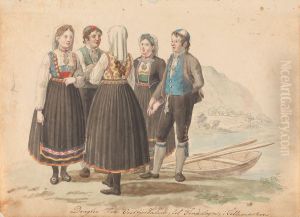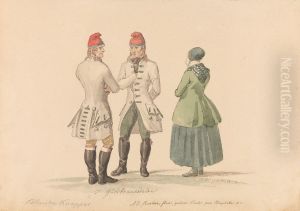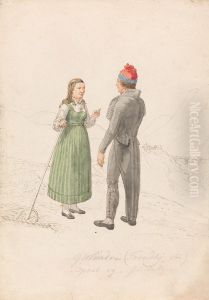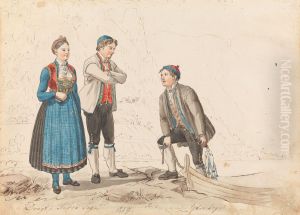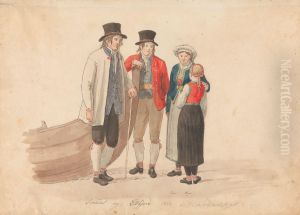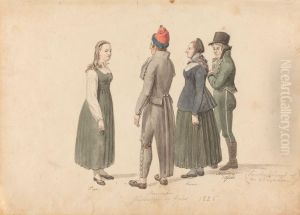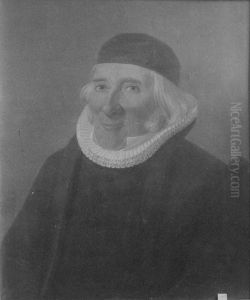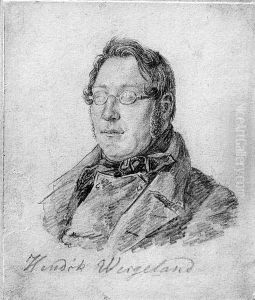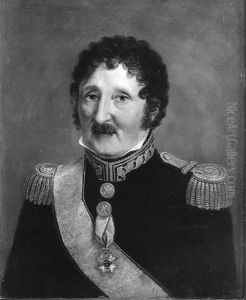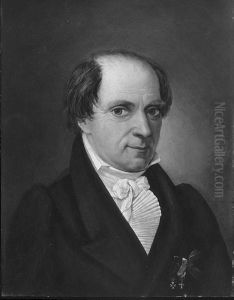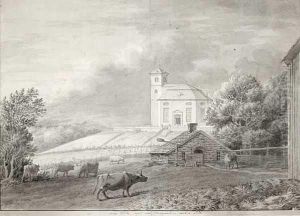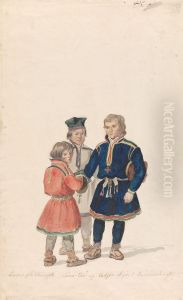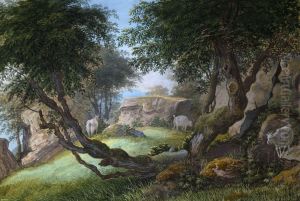Johannes Flintoe Paintings
Johannes Flintoe was a Danish-born painter and lithographer who became a significant figure in the development of early 19th-century art in Norway. Born on January 28, 1787, in Copenhagen, Denmark, Flintoe moved to Norway, where he would leave an indelible mark on the Norwegian art scene, particularly through his contributions to national romanticism and his influence on the depiction of Norwegian landscapes, history, and culture.
Flintoe's early career was marked by his education at the Royal Danish Academy of Fine Arts in Copenhagen, where he honed his skills in painting and drawing. His move to Norway was partly influenced by the opportunities that arose in the wake of the country's emerging national consciousness following the union with Sweden in 1814. In Norway, Flintoe was employed at the newly established Royal Frederick University (now the University of Oslo) as a drawing teacher, a position that allowed him to influence a generation of young Norwegian artists.
His work during this period was characterized by a keen interest in Norway's natural scenery, historical sites, and folk costumes. Flintoe is perhaps best known for his watercolors and drawings that capture the essence of Norwegian rural life and landscapes. His travels throughout Norway, often on foot, enabled him to document the country's diverse regions, from the dramatic fjords of the west coast to the historic buildings of rural districts. These works were instrumental in shaping the visual identity of Norway during a time of growing national awareness and played a key role in the romantic nationalistic movement that swept through Norwegian art and culture in the 19th century.
In addition to landscapes and cultural depictions, Flintoe also made significant contributions to historical painting, creating works that depicted scenes from Norway's Viking Age and medieval period. His historical paintings, characterized by their attention to detail and historical accuracy, were based on meticulous research and contributed to a resurgence of interest in Norway's past.
Johannes Flintoe's legacy is preserved in the collections of several Norwegian institutions, including the National Museum of Art, Architecture and Design in Oslo, where his works continue to be celebrated for their contribution to the national romantic movement and their enduring representation of Norway's cultural heritage. He passed away on January 4, 1870, in Christiania (now Oslo), Norway, leaving behind a body of work that continues to be appreciated for its beauty and historical value.
